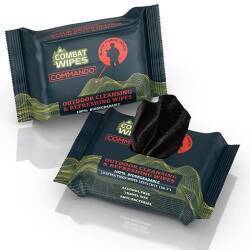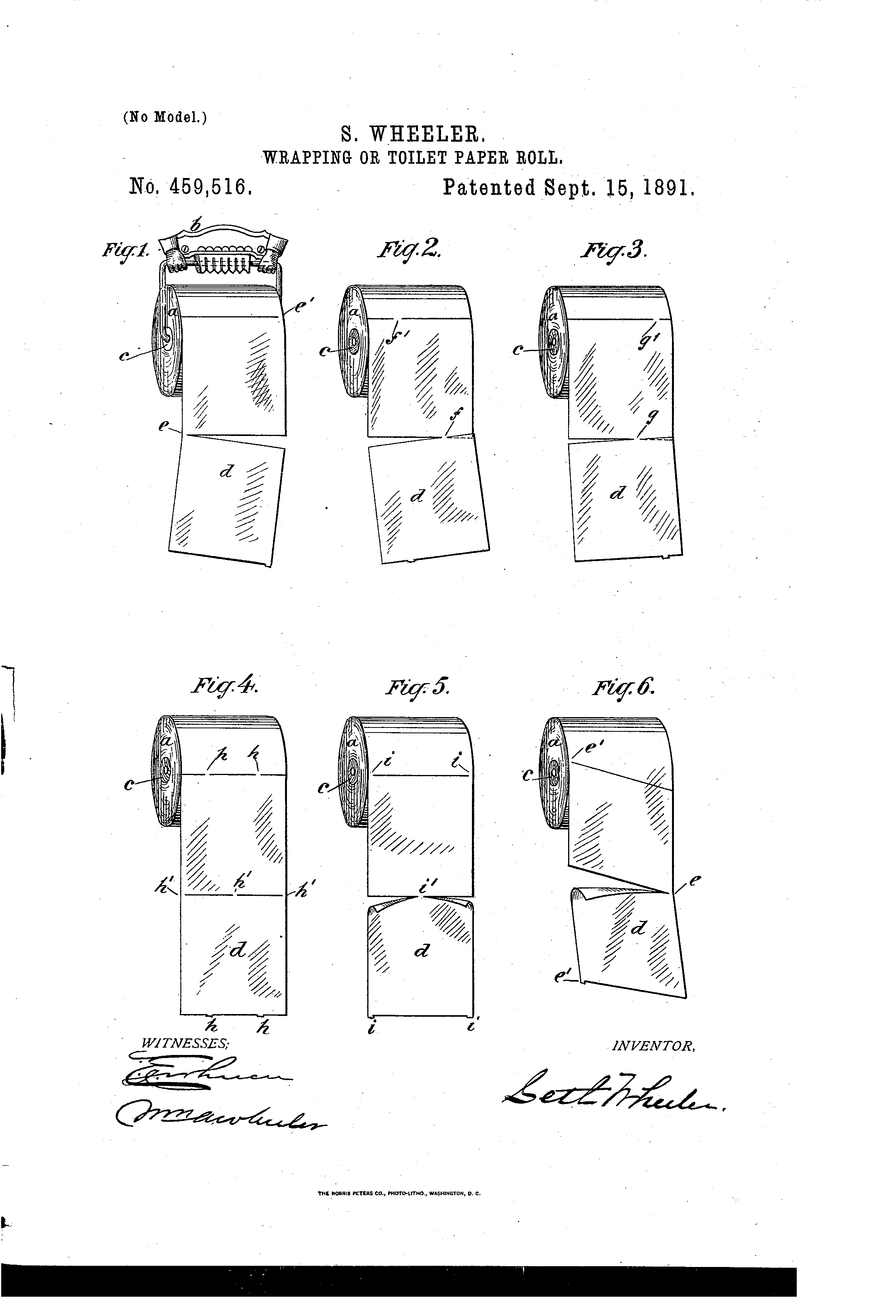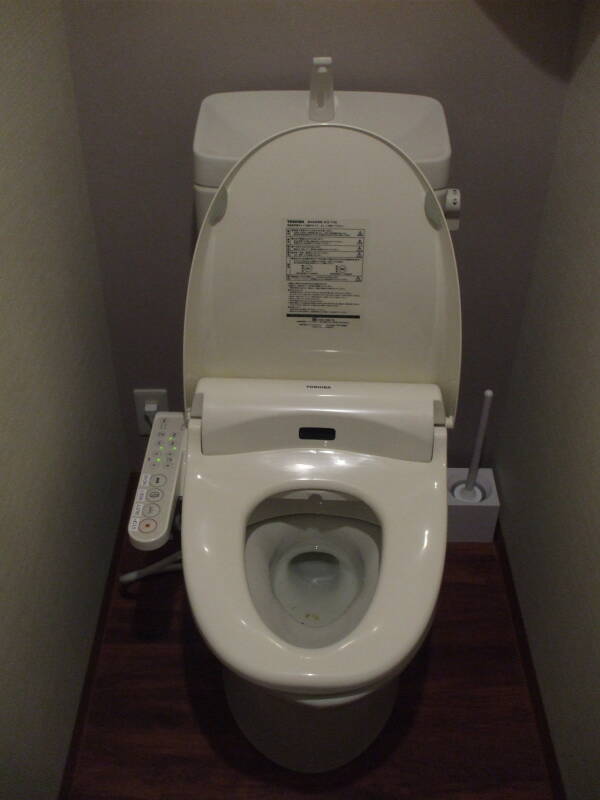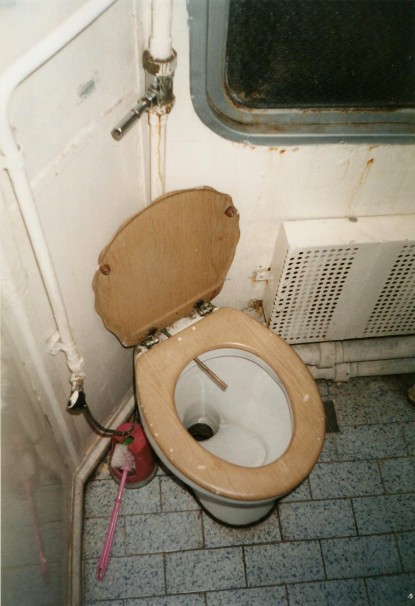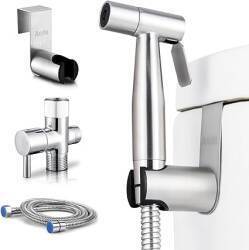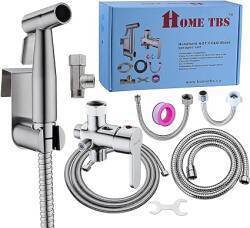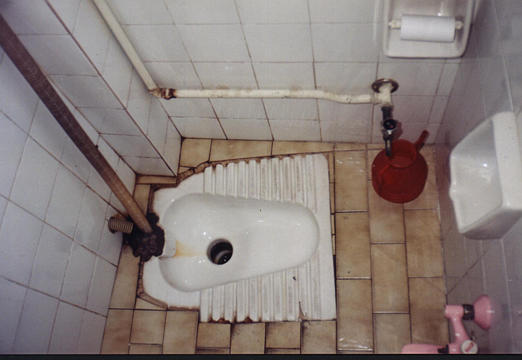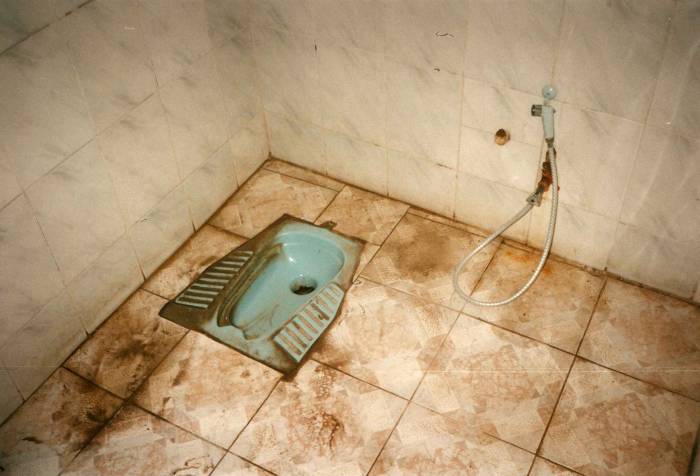
Wipe or Wash? Toilet Paper or Water?
Wipe or Wash?
Paper or Water?
"Squat or sit?" is probably the biggest toilet question for international travelers, especially for Americans. That may be the case partly because Americans don't even know that they need to also ask this question: What do the locals use to clean themselves, and therefore what will they provide for me: Toilet paper or water?
Imagine that you are an American traveling overseas.
You check into a hotel, only to discover that you don't have a shower or tub in your room. Nor is there one down the hallway.
Quickly, you go back downstairs to the front desk.
You inquire at the front desk about where you should take a shower, and the desk clerk is horrified that you would want to do such a thing.
You are told that what you should do is rub dry paper all over your body. That is the very best way of getting clean. Spraying water on your body would be a dirty practice! Don't behave that way in our hotel!
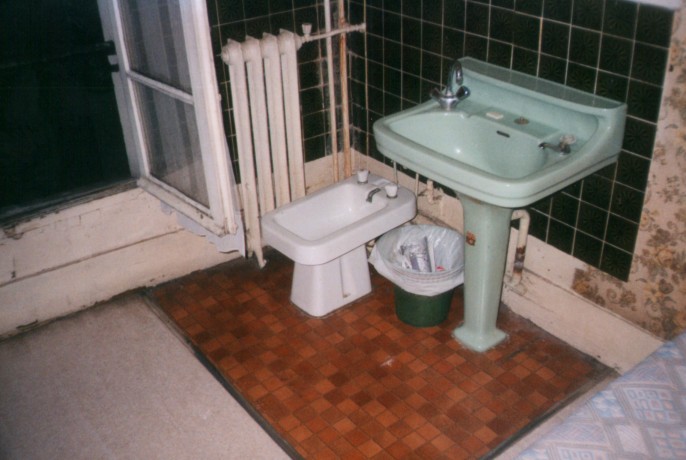
A bidet just like the one in Jim Morrison's room in l'Hôtel de Medicis in Paris.
OK, now you know how everyone else feels when they hear an American say that toilet paper is extremely clean but using water is a filthy practice.
It's not just toilet paper versus water.
For one thing, just what do we mean by "paper"? And for another, there are many other possible choices. Sticks, stones, broken pottery, and more — read on for the details.
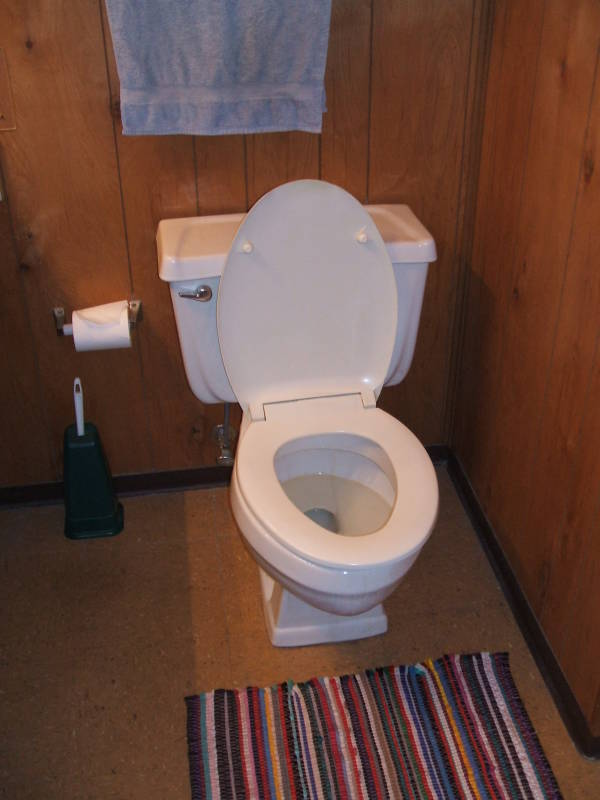
My North American toilet and its roll of toilet paper.
Origins of Toilet Paper in China During the Zhou Dynasty
China had toilet paper for centuries before it appeared in Europe.
The Chinese scholar and government official Yan Zhitui wrote about toilet paper in China in 589 AD:
Paper on which there are quotations or commentaries from the Five Classics or the names of sages, I dare not use for toilet purposes.
Paper had been produced and used in China since the 2nd century B.C. for other purposes, some of it based on hemp. Pulp based paper was developed in China in the 2nd century AD.
In 851 AD, during the Tang Dynasty (618-907 AD), an Arab traveling through China wrote this about the locals:
They do not wash themselves with water when they have done their necessities; but they only wipe themselves with paper.
It was recorded in the early 1300s in what today is Zhejiang province that the local paper industry annually manufactured ten million packets of toilet paper, each containing 1,000 to 10,000 sheets.
In 1393 an official of the Ming Dynasty (136-1644) recorded that 720,000 sheets of toilet paper, two by three feet in size, were produced for the imperial court at Nanjing. That same year, the Imperial Supply Bureau recorded that the imperial family of the Emperor Hongwu consumed 15,000 sheets of special perfumed soft-textured toilet paper.
Nearby, in Japan, the Sticks Come Out
Starting in ancient times, and continuing all the way to today for real traditionalists, a chūgi was a special wooden stick used for cleaning the anus after defecation.
Its name means "wooden skewer", coming from the kanji for skewer and tree. Chūgi seem to have been depicted in scroll paintings since the 12th century AD, and must have been in use for some time at that point.
They're narrow thin sticks of wood, maybe 200 mm long, approximately 10 to 20 mm wide and a few millimeters thick.
Meanwhile, in Europe...
Europeans didn't have toilet paper until recently. The Romans used a tersorium, also called a xylospongium, a sponge mounted on a stick. The sponge could be dipped into a water channel running in front of the row of communal toilets in the latrine, and rinsed off in that channel after use. If there was no channel of running water, a bucket of salt water or vinegar water would be used, as Seneca described in his Letters of Lucillus [70,20].
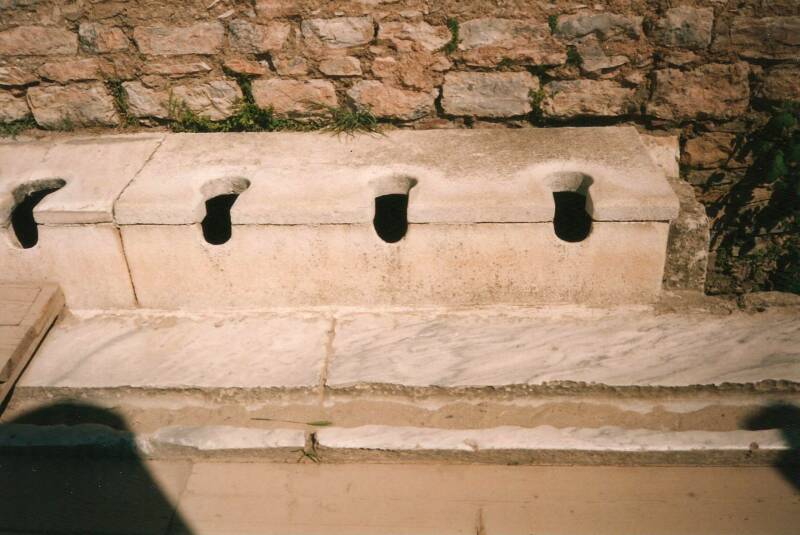
Public latrine at Ephesus in Asia Minor, now western Turkey. Notice the water channel running in front of the seats.
If neither a tersorium nor water were available, the Greeks and Romans used πεσσοι or pessoi, small stones, to clean themselves. The tradition started with the ancient Greeks that three stones should be enough to finish the job. This convention has been very long lived, with a hādīth attributed to Muhammad specifying three stones as the ideal number for anal cleaning. The pessoi were also used in an ancient board game in Greece. Aristophanes wrote a scene involving pessoi in Peace in the 5th century BCE. Here's the Penguin Classics translation:
Arms dealer [displaying a cuirass]: And what, alack, shall I do with this rounded cuirass, a beautiful fit, worth ten minas?
Trygaeus: Well, that one will not make a loss for you, anyway. Give me that at cost price. It will be very convenient to crap in ...
Arms dealer: Stop this impudent mockery of my goods!
Trygaeus [placing the cuirass on the ground like a chamber pot and squatting on it]: Like this, if you put three stones beside it. Is it not clever?
The Greeks would use όστρακα or ostraka, small pieces of broken ceramic goods, to vote to shun or ban their opponents. This is where we get the word ostracize. Some scholars have suggested that the ostraka could be used as pessoi, literally wiping your feces onto the names of hated individuals. The abrasive characteristics of broken ceramic material suggest that long-term used of these as pessoi could have resulted in localized irritation at the least, progressing to skin or mucosal damage or the irritation of external hemorrhoids. For more on toilet use of pessoi and ostraka and the medical implications see the paper "Toilet hygiene in the classical era", Philippe Charlier, Luc Brun, Clarisse Prêtre, and Isabelle Huynh-Charlier, in BMJ (the British Medical Journal) 2012, pages 345-346.
Paper technology spread from China through the Middle East to medieval Europe in the 13th century. Water-powered paper mills were first built in Europe in the 1200s. Paper remained an expensive and uncommon material until industrial production greatly reduced its cost in the 1800s.
In a letter written to his son in 1747, Philip Dormer Stanhope, 4th Earl of Chesterfield (1694-1773), described his system for selecting books to read a few pages at a time, using that session's pages as toilet paper:
I knew a gentleman, who was so good a manager of his time,
that he would not even lose that small portion of it,
which the calls of nature obliged him to pass in the
necessary-house; but gradually went through all the Latin
poets, in those moments.
He bought, for example, a common edition of Horace,
of which he tore off gradually a couple of pages,
carried them with him to that necessary place, read them first,
and then sent them down as a sacrifice to
Cloacina:
this was so much time fairly gained;
and I recommend to you to follow his example.
It is better than only doing what you cannot help doing
at those moments; and it will make any book, which you
shall read in that manner, very present in your mind.
Books of science, and of a grave sort, must be read with
continuity; but there are very many, and even very useful ones,
which may be read with advantage by snatches, and
unconnectedly;
such are all the good Latin poet, except Virgil in his
Æneid; and such are most of the modern poets,
in which you will find many pieces worth reading,
that will not take up above seven or eight minute.
Bayle's Moreri's, and other dictionaries, are proper books
to take and shut up for the little intervals of (otherwise)
idle time, that every body has in the course of the day,
between either their studies or their pleasures.
—
The Works of Lord Chesterfield: Including His
Letters to His Son, Etc: to which is Prefixed,
an Original Life of the Author
The first patent for roll-based toilet paper dispensers was issued in Europe as late as 1883. It took another 8 years for a patent to appear in the U.S.
The wealthy classes used cloth made from wool, cotton lace, or hemp. The majority of people, however, had no such luxury. Some might have some rags they could use, but the simplest method was to defecate into a stream and use your hand and the running water. Otherwise, it depended on the location and the season. Stones and sand were indestructable, and could be reused after running water or precipitation had washed them. Plant material would be less harsh: wood shavings, leaves, grass, moss, and corncobs. Snow in the winter in northern areas would really wake you up. And there were seashells by the seashore.
The squeamishness of Victorian times prohibited explicit references to toilet paper. Women might ask a shopkeeper for "curling papers", which were used for making hair-curling rolls, and it would somehow be implied that she really meant toilet paper. Or it would be called "wrapping paper".
The squeamishness continued for a long time. Until 1975, the American Broadcasting Company network prohibited the use of the phrase "toilet paper" in advertising and required that it be called "bathroom tissue" instead.
Toilet Paper in the United States
The inventor Joseph Gayetty was born in Massachusetts and lived in New York City by 1860. On December 8, 1857, he started marketing his toilet paper, Gayetty's Medicated Paper. US$ 0.50 purchased a package of 500 sheets of paper bearing Gayetty's name as a watermark and impregnated with aloe. His paper was marketed as "unbleached pearl-colored pure manila hemp paper, a perfectly pure article for the toilet and the prevention of piles [hemorrhoids]". His design was licensed to other manufacturers, and was sold into the 1920s.
The product was needed, as residual fecal contamination of external body surfaces and therefore clothing and bedding posed serious health hazards, especially in the military. During the American Civil War, the incidence of typhoid fever reached 80 cases annually out of every 1000 soldiers. In the Spanish-American War, when toilet paper was used some among the civilian population but not in the military, the military typhoid rate grew to twice that of the Civil War.
First U.S. patent for toilet paper rollsSeth Wheeler obtained the earliest U.S. patents for toilet paper in roll form and its dispensers in 1871. It defined the correct direction as the end of the roll coming over the top and down the front. The Scott Paper Company was then founded in 1879. The earliest roll paper was essentially the same paper that was used to produce newspapers. It wasn't until 1907 that a creped paper roll introduced a trend toward softer paper.
The Old Farmer's Almanac has traditionally been produced with a hole drilled through one corner so it can be hung on a nail in an outdoor toilet and its pages used as toilet paper.
The celebration of ignorance and backwardness found many places in the American south (and some places not really all that far south) leads the publisher to keep drilling the holes. Toothless hillbillies and people who like to play that role joke about wiping themselves with corncobs and pages from the Old Farmer's Almanac and the Sears and Roebuck Catalog.
After Gayetty, American toilet paper went back to all dry, all the time, until Kimberly-Clark started marketing packages of moistened toilet paper in 2001.
Meanwhile, in 1905, a report from the Surgeon General of the Army specified "the issue of toilet paper is now authorized where posts have sewer connections." During World War I the incidence of typhoid fever fell to about 3 cases annually per 1000 soldiers. During World War II is was less than 0.1 cases annually per 1000 soldiers, and it was even lower during the Korean War.
Recent Developments in Toilet Paper
Colors (or not)
The Printemps department store in Paris carries toilet paper in a a wide variety of colors and patterns.
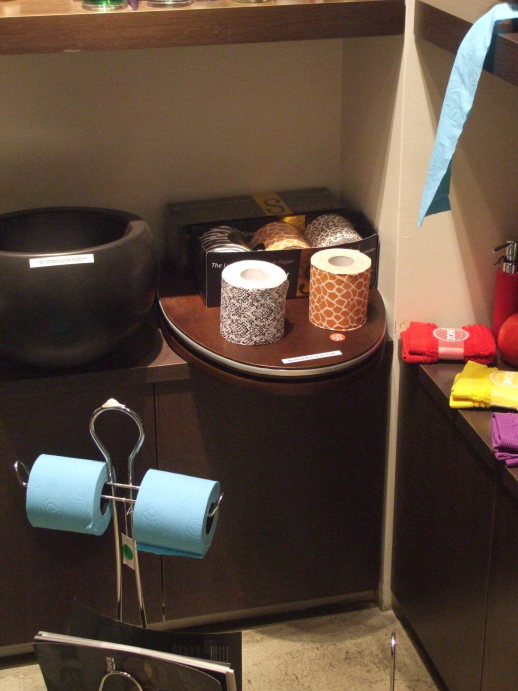
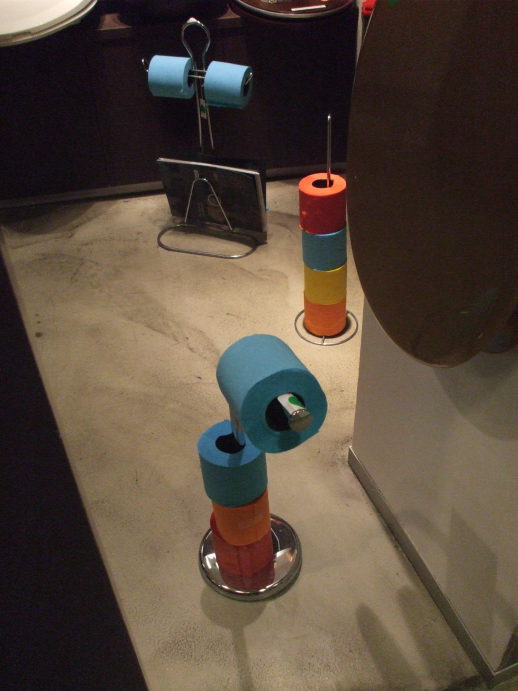
A variety of light colors were available in the U.S. starting in the 1960s. But by 2004, Scott was the last U.S. manufacturer of colored toilet paper and they stopped production that year.
Why colored toilet paper uncommon in the U.S.? Two beliefs became widespread, that physicians were warning against its use because it caused some people to develop a rash, and that the dyes made it environmentally harmful. Is there any truth to either one? The French seem to be able to put up with colored toilet paper, that's for sure.
American Paranoia
The "prepper" and "survivalist" movements in the U.S. believe that society is about to collapse. They think that the government is about to direct the military to attack its own citizens. These "brave patriots" stockpile freeze-dried and canned food and crates of guns and ammunition.
However, in an apocalyptic survivalist setting, no one wants to go without soothing wipes and body wash. They will buy anything if it has a military-sounding name and packaging. "Tactical Wipes", "Combat Wipes", and so on.
Toilegami
Toilegami or toilet paper folding has become a worldwide trend in hotels. James P. McCauley, the executive director of the International Association of Holiday Inns, explained it:
Hotels want to give their guests the confidence that the bathroom has been cleaned since the last guest has used the room. To accomplish this, the maid will fold over the last piece of toilet paper to assure that no one has used the toilet paper since the room was cleaned. It is subtle but effective.
Fancy hotels do it. In this first picture we see what, honestly, is a not very sharp job of folding the toilet paper at a Hilton hotel in Rockville, Maryland, on the northwestern outskirts of the Washington, D.C. area.
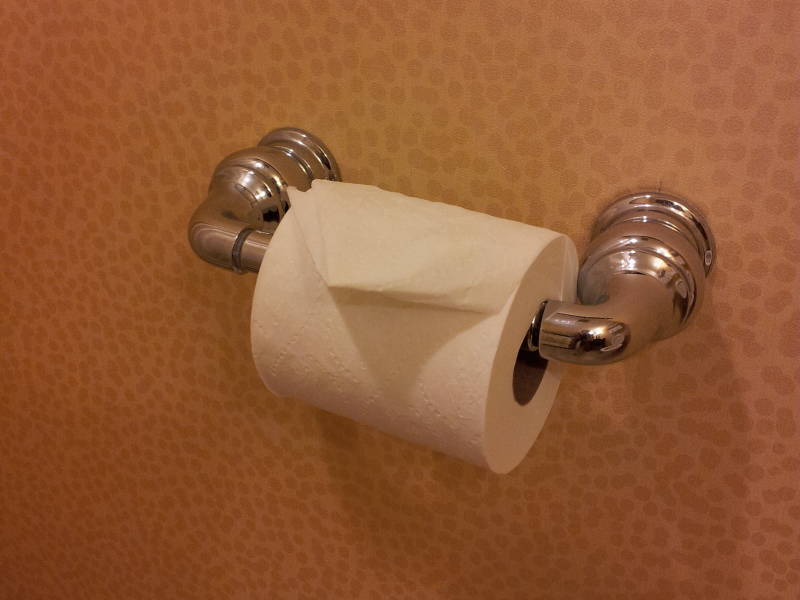
Toilegami at the Hilton hotel in Rockville, Maryland.
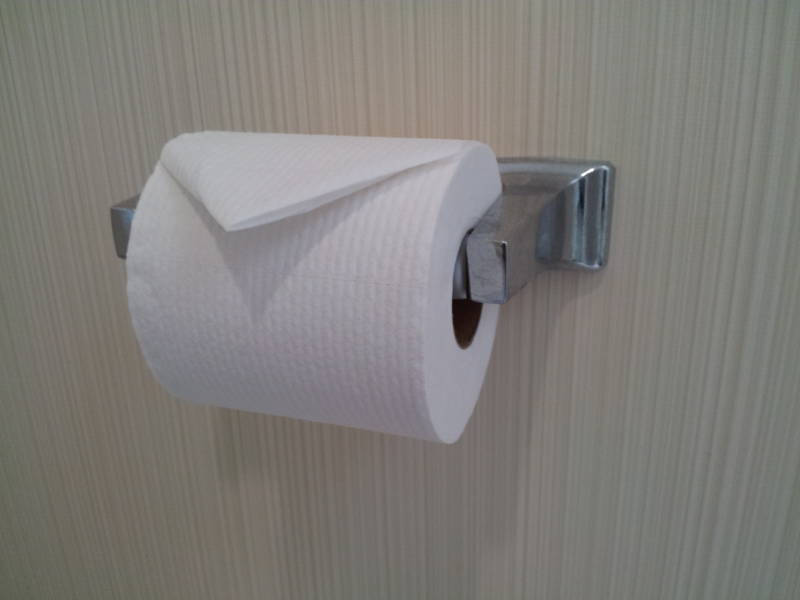
Toilegami at the Residence Inn in Herndon, Virginia.
The Residence Inn in Herndon, Virginia makes a sharper crease in their toilet paper. This is the location of the Toilets of Terror, where one group of 9/11 hijackers stayed the night before their attack.
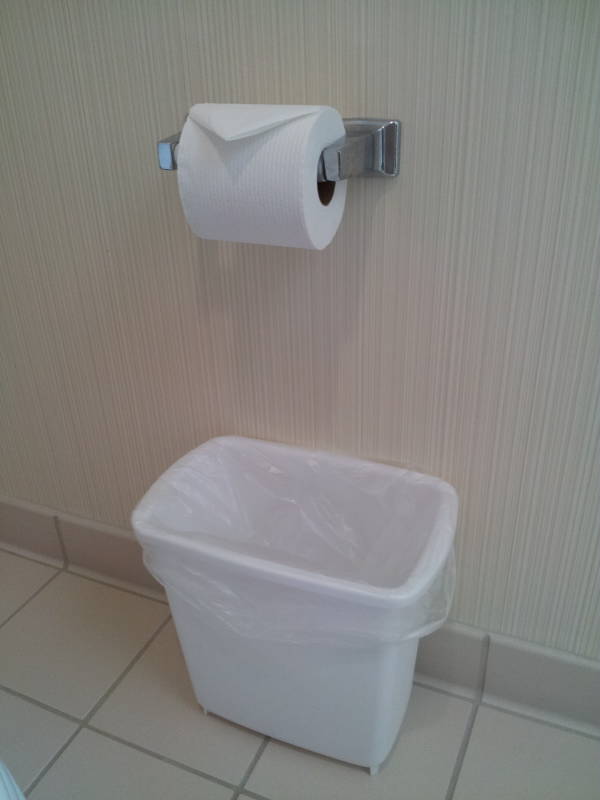
Toilegami at the Residence Inn in Herndon, Virginia.
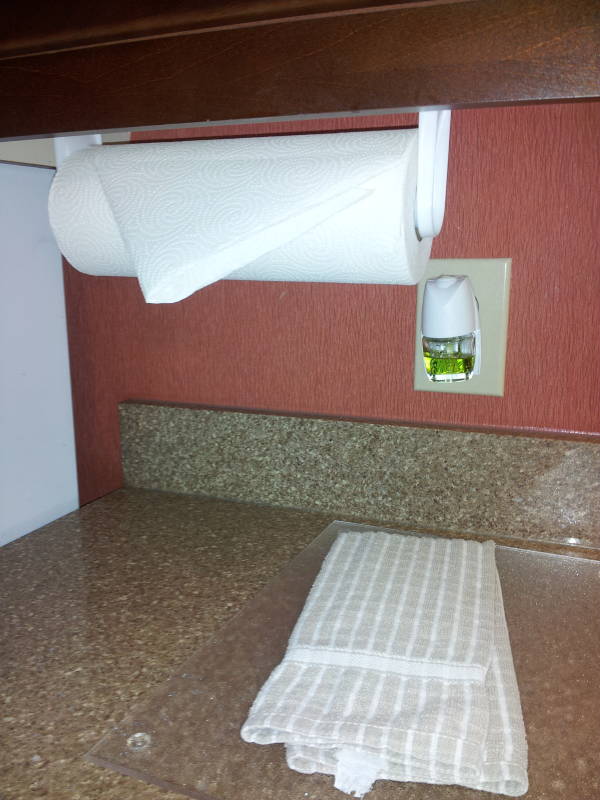
Folded kitchen paper towel at the Residence Inn in Herndon, Virginia.
The Residence Inn provides an apartment type of accommodation with a full kitchen. They even fold the end of the paper kitchen towel roll! Kitchentoweligami, I suppose.
The Four Points Sheraton in Romulus, Michigan, just outside the Detroit Airport, gives you one roll folded and one roll tucked to avoid inadvertent unrolling.
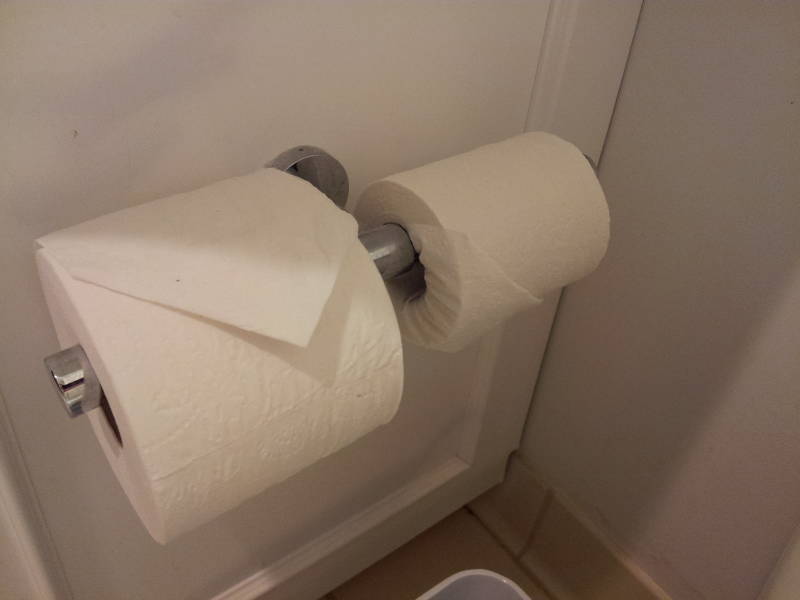
Toilegami and counter-roll tucking at the Four Points Sheraton in Romulus, Michigan.
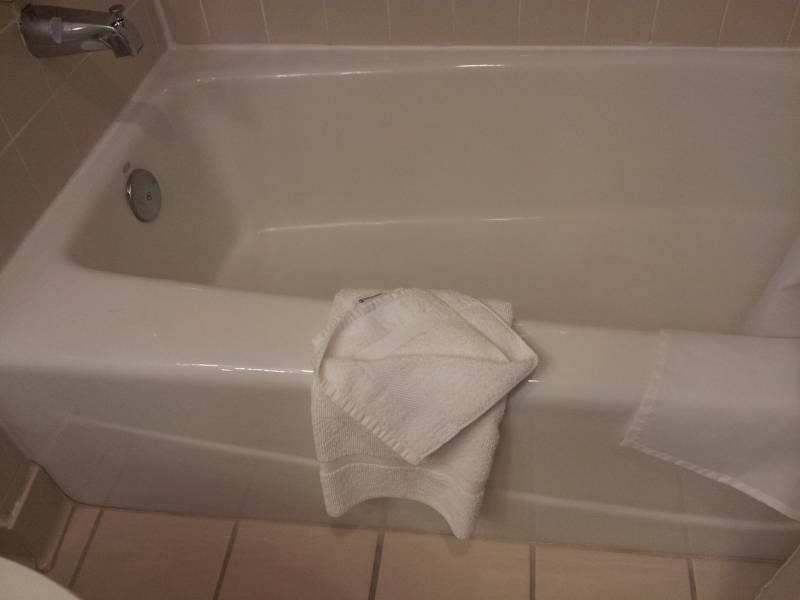
Bathtoweligami at the Four Points Sheraton in Romulus, Michigan.
The Sheraton also makes an attempt at bathtoweligami.
Everyone gets into this trend. The Baltimore Hostel even folds their toilet paper, both in the shared bathrooms (in the first picture) and in those in the rooms (in the second).
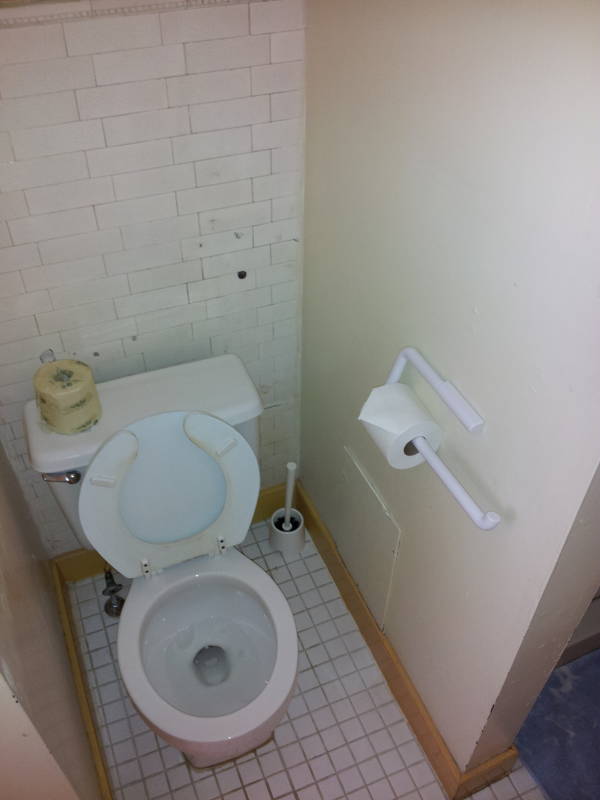
Toilegami or folded toilet paper at the Baltimore Hostel.
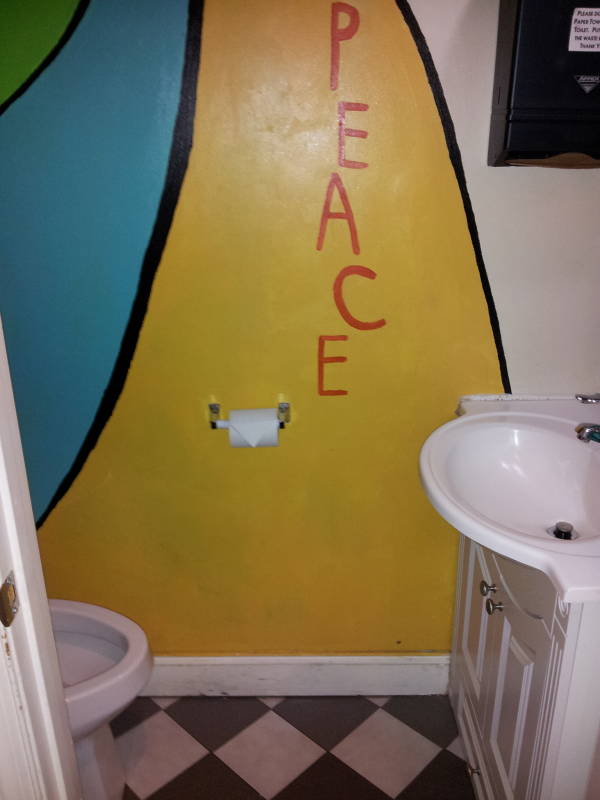
Toilegami or folded toilet paper at the Baltimore Hostel.
How to Install a Modern Toilet Paper Roll
This is very simple.
Install it the civilized way.
This isn't just my opinion, this has been established scientific fact since 1891. See U.S. Patent 459,516, "Wrapping or toilet paper roll" by Seth Wheeler. The paper must come out over the top of the roll, not dangle down against the wall. Also see his other U.S. Patents:
465,588, "Toilet-paper roll" 447,419, "Toilet-paper fixture" 438,457, "Paper-roll holder" 954,709, "Paper-holder"
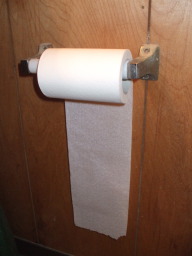
INCORRECT
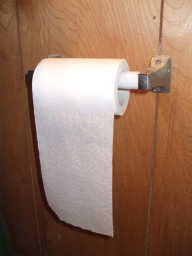
CORRECT
Cleaning Yourself With Water
The bidet was invented in France in the 1710s. It's a device that makes it easy to clean yourself with water.
More onthe Bidet
The Fawlty Towers hotel in Rome offers you a choice between this very well supplied toilet and a bidet. An entire laundry hamper filled with toilet paper!
This standalone bidet is about the same size as the toilet bowl. The two knobs control the hot and cold water so you can adjust the temperature.
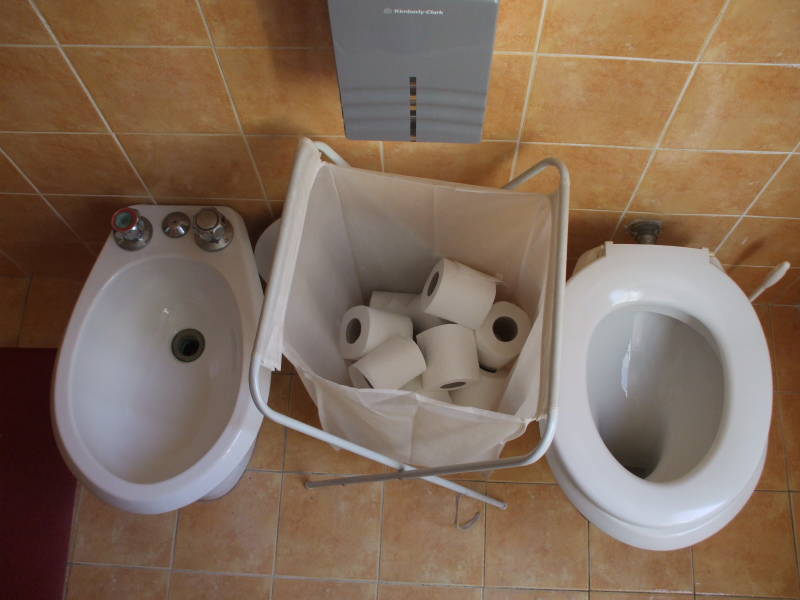
The bidet functionality can be added to a toilet, as in the following unit.
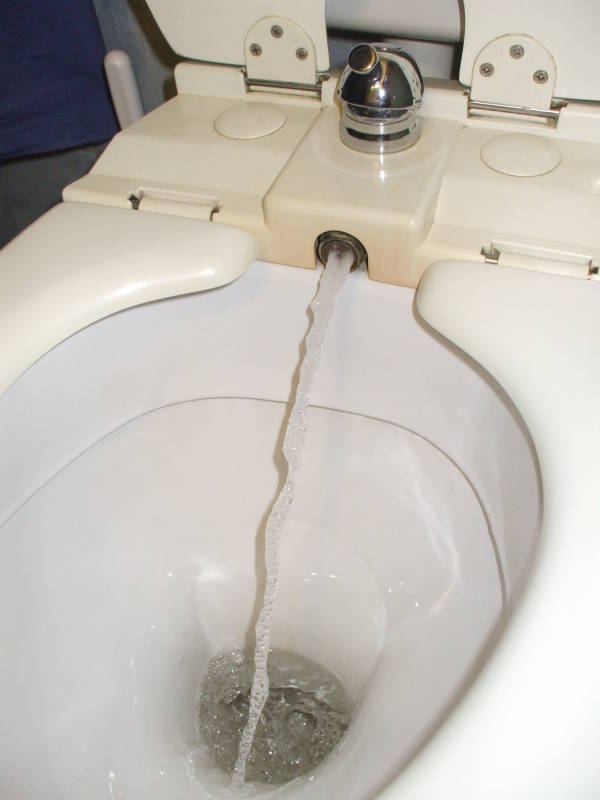
Toilet with added bidet functionality in Genova, Italy.
Toilets
But to really add functionality to a toilet, see the high-tech toilets of Japan, with their multi-paragraph instruction manuals explaining their operation on the bottom side of the lid.
Turkey
A simpler water cleaning modification simply adds a valve and copper tube as seen on this Turkish 1st-class yataklı vagon, or sleeper car, on the Pamukkale Ekspresi train between İstanbul and Denizli.
The Turkish name for this toilet-mounted water tube is taharet musluğu. Literally, that's bidet faucet. Taharet is bidet, musluğu is faucet or nozzle. The Arabs say shattaf, see the Islamic toilet regulations page for details.
The Mavi House guesthouse in the Sultanahmet district of İstanbul, has a squat toilet with a water spigot and a small red bucket. For some reason the Turkish toilet buckets are almost always red.
To summarize the water-vs-paper situation:
North America
Nothing but paper, except for the bidets of Quebec.
Europe
Paper is provided (or, as you get further east, it isn't provided but neither is water, they expect you to bring your own paper). However, water is preferred by many or most locals in some western European countries such as France and Italy.
Middle East
In Turkey, toilet paper is only found in places catering to tourists. Beyond Turkey, I would be very surprised to find toilet paper. It is expected that you will use water.
Bowlor bin?
If you bring your own paper, there will be a small rubbish bin into which you should place your used toilet paper.
Asia
It is expected that you will use water.
A lota is a roughly spherical small water vessel made from brass, copper or plastic, and found in India and other parts of South Asia. Its name is from Hindi and Urdu. In Bangladesh, it's called a bodna or badna.
In Southeast Asia, you encounter a wide plastic dipper. It's called a tabo in the Philippines and a gayung in Indonesia and Malaysia.
In Japan you will have water and paper.
South America
In my limited experience, just Chile so far, it's all paper. And you put it in the trash bin, not in the bowl.
Islamic Lands
Turkey'sT.P. Fatwa
Turkey's Directorate of Religious Affairs has published a fatwa stating that toilet paper is permissible within Islam. But otherwise, it's pretty much all water.
The next question:
All of this leads to a further question: If you are using paper, possibly paper from a personal supply:

